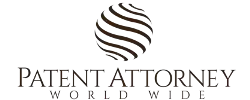Step 6: Examination of patent application
The examination of a patent application is the process in which a patent office reviews the application to assess its compliance with patentability criteria which includes evaluating the invention’s novelty, non-obviousness, utility, and sufficiency of disclosure. The results of the examination are communicated in the office action.
What happens in the Examination of a patent application
- Filing of patent application: The patent application is submitted to the relevant national or regional patent office. The application includes a description of the invention, claims defining the scope of protection sought, and any necessary drawings or supporting materials. The applicant usually pays filing fees at this stage.
- Formality Examination: The patent office conducts a formality examination to ensure that the application meets the required formal requirements. This includes verifying that all necessary documents and information have been provided and that the application is filed within the prescribed time limits.
- Prior Art Search: A patent examiner or a search authority appointed by the patent office performs a search for prior art. The prior art includes existing patents, scientific literature, and other publicly available information that may be relevant to the claimed invention. The search aims to identify prior inventions or technologies that may affect the patentability of the claimed invention.
- Substantive Examination: The examiner evaluates the patent application’s compliance with patentability criteria, such as novelty, inventive step (non-obviousness), and industrial applicability. The examiner reviews the claims in detail, compares them with the prior art found during the search, and assesses whether the invention meets the necessary requirements for patent protection.
- Office Actions: If the examiner identifies issues with the patentability of the invention, an Office Action is issued. The Office Action outlines the reasons for rejections, objections, or requests for further clarification or amendment. The applicant is given an opportunity to respond to the examiner’s concerns and make amendments or arguments to support the patentability of the invention.
- Amendments and Arguments: The applicant can amend the claims, description, or drawings of the patent application based on the examiner’s objections or rejections. The applicant may also provide arguments, evidence, or expert opinions to address the examiner’s concerns and demonstrate the patentability of the invention. This process may involve multiple rounds of Office Actions and responses.
- Allowance or Final Rejection: If the examiner is convinced that the application meets the patentability requirements, an allowance is issued, indicating that the patent will be granted. However, if the examiner maintains rejections and the applicant’s responses fail to overcome them, a Final Rejection may be issued. The applicant may have the option to appeal the decision or take other legal actions available in that specific country’s patent system.
- Grant and Publication: If the application is allowed, the applicant typically pays the necessary fees. Once the fees are paid, the patent office grants the patent, and it is published in the official patent register or database.
As per 35 U.S.C. 131 Examination of Patent Application.
The Director shall cause an examination to be made of the application and the alleged new invention; and if on such examination it appears that the applicant is entitled to a patent under the law, the Director shall issue a patent therefor.
The main conditions precedent to the grant of a patent to an applicant are set forth in 35 U.S.C. 101, 102, 103, and 112.
- Once your application has been accepted as complete, it will be assigned for examination. Your examiner will review the contents of the application to determine if the application meets the requirements of 35 U.S.C. 111(a).
- The objections raised on your patent application would be communicated with you, by an official letter from the USPTO, known as an Office Action. You would get the opportunity to make amendments or contest the objections raised.
- There is a specific time within which you will have to respond to the objections, if you failed to do so the patent application will be abandoned.
- In the First Action Interview Pilot Program, you can have an interview with the examiner. after you have reviewed the objections and results of the search conducted by the examiner.
- This gives you an opportunity to have one on one discussion with the examiner which shortens the time and to and fro communications for resolving objects and it can result in quicker allowance of a patent for your invention.
Time required for examination of application: USPTO takes the application for examination (in about 12-36 months).
Patent Examination Fees
| Description | Fee | Small Entity Fee | Micro Entity Fee |
| Utility Examination Fee | 800.00 | 400.00 | 200.00 |
| Examination of Application | Responsibilities | |
| Inventor |  | the patent agent or patent attorney makes a request for examination on your behalf. |
| A patent agent or attorney |  | Making a request for examination |
| Patent office |  | receive a request for examination and examiner check the patent application for patentability and other criteria and generates search report (office action) |
After the application is filed, the U. S. Patent Office takes the application up for examination (usually in about 12-36 months). In this stage, patent examiners at USPTO conduct their own search related to your invention (patent application) and issue and office action.
Accelerated Examination
the examination of a patent application may be accelerated, the USPTO will advance an application out of turn for examination if the applicant files a grantable petition to make special under the accelerated examination program.
The U.S. Patent and Trademark Office (USPTO) provides several accelerated programs for patent prosecution.
- The Track One program: which requires a $4,200 fee, allows expedited examination with posisbility of disposition of application within 12 months.
- The Climate Change Mitigation Pilot Program allows applications involving technologies that reduce greenhouse gas emissions to be advanced for examination until the mailing of a first action on the merits.
- The Cancer Immunotherapy Pilot Program offers expedited examination of patent applications related to cancer immunotherapy, with a final decision issued within one year.
The USPTO participates in Patent Prosecution Highway (PPH) programs (e.g., Global Patent Prosecution Highway (GPPH) or IP5 PPH) for either a U.S. direct application or a U.S. national phase application related to a Patent Cooperation Treaty (PCT). Under this program, claims allowed in corresponding applications in participating patent offices can be a basis for accelerated examination of substantially identical claims in the USPTO.
Under PPH, participating patent offices have agreed that when an applicant receives a ruling from a first patent office that at least one claim is allowable, the applicant may request fast track examination of corresponding claim(s) in a corresponding patent application that is pending in a second patent office. PPH leverages fast-track examination procedures already in place among participating patent offices to allow applicants to reach final disposition of a patent application more quickly and efficiently than standard examination processing.
Next article : Step 7: Office action- Response to objections
